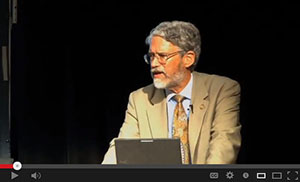CENTER NEWS |
Max Boykoff Selected as Leopold Leadership Fellow
Max is among the 20 mid-career academic environmental researchers named as fellows this year. The group was selected through a highly competitive process on the basis of their exceptional scientific qualifications, demonstrated leadership ability, and strong interest in sharing their knowledge beyond traditional academic audiences. The fellows will take part in intensive leadership and communications training designed to hone their skills in engaging with decision-makers, media, and the public. They also become part of a network of past fellows and program advisors who are working with leaders, both within and outside academe, to solve society’s most pressing environmental and sustainability challenges. Previous Leopold Leadership Fellows at the University of Colorado include Dr. Alan Townsend, Dr. Sharon Collinge, and Dr. Anne Chin. Congrats Max!!! |
Center News |
CSTPR Researchers Contribute to Analysis of Southwest’s Climate Future
A hotter future is projected for the Southwestern United States—a region stretching from the California coast to the plains of eastern Colorado and New Mexico—and future heat and changes in precipitation will present challenges for managing natural resources, water, infrastructure and threats to human health. The new book, “Assessment of Climate Change in the Southwest United States,” published by Island Press, is a landmark study that addresses these issues. It focuses on current climate conditions in the region, the environment of the past, what is projected to change over the 21st century and how this will impact ecosystems, water resources, agricultural production, energy supply and delivery, transportation and human health. The work includes major contributions from fourteen University of Colorado scientists, twelve of whom are part of CIRES and three from CSTPR. A consortium of researchers from the Southwest Climate Alliance coordinated the assessment and the scientists are affiliated with the National Oceanic and Atmospheric Administration’s Regional Integrated Sciences and Assessment Program and the U.S. Department of the Interior Southwest Climate Science Center. The book blends the contributions of 120 experts in climate science, economics, ecology, engineering, geography, hydrology, planning, resource management and other disciplines. The book is one of ten regional technical inputs to the 2013 National Climate Assessment released in draft form earlier this year. Besides Averyt, Brad Udall, who is now director of the Getches-Wilkinson Center for Natural Resources, Energy and Environment, is also a lead author of a book chapter. Other CIRES scientists who contributed to chapters are Joe Barsugli, Maxwell Boykoff, Lisa Dilling, Jon Eischeid, Eric Gordon, Brant Liebmann, Jeff Lukas, Balaji Rajagopalan, Imtiaz Rangwala, William Travis, and Klaus Wolter. The work of Ami Nacu-Schmidt is also integral to the book, as she created or adapted the majority of the graphics illustrating the authors’ findings. The new book stresses the choices and opportunities available to society, in order to reduce the causes and effects of climate change in the region. It notes the steps governments, businesses, organizations and individuals are taking to improve energy efficiency, improve water supply reliability, decrease wildfire risk, and reduce greenhouse gas emissions. |
Center News |
A Conversation with James Balog on the Art of Chasing Ice
Inside the Greenhouse seeks to deepen the public understanding of how issues of climate change are communicated by creating artifacts— art, film, television programming— that convey climate change. The centerpiece of the project will feature highlights from the conversation with Balog and students’ creative work. Sponsors of “The Art of Chasing Ice” include the CIRES, CU-Boulder Institute of Arctic and Alpine Research (INSTAAR) and Learn More About Climate, an initiative that seeks to extend CU-Boulder climate science expertise to educators, policymakers and citizens. Additional sponsors include the National Snow and Ice Data Center, the CU-Boulder Office for University Outreach, the CU-Boulder Environmental Center and Flatirons Bank. |
Center News |
Roger Pielke, Jr. 2012 GSA Public Service Award – Citation by Daniel Sarewitz and Response
Roger’s response follows: “While in college in the late 1980s I worked as a student assistant doing FORTRAN programming for the Atmospheric Chemistry Division at the National Center for Atmospheric Research. There I was surrounded by world-leading scientists doing research related to stratospheric ozone depletion. I remember hearing these scientists observe that policy making would be much improved if only politicians had a better understanding of science. That set me on a path in graduate school to learn a bit about policy making before, I then thought, returning to the physical sciences. Along the way I had a chance to go to Washington, DC, with Radford Byerly when he left a position at the University of Colorado to serve as chief of staff to Congressman George Brown, who had become chairman of the House Committee on Science and Technology. There I was surrounded by top science policy makers grappling with the early days of post-Cold War science policies. One day after a long hearing on some complex issue, I distinctly remember sitting in a corner of Rad’s office while the top staff — including lawyers and Ph.D. scientists — observed that policy making would be much improved if only scientists had a better understanding of politics. It was that very moment that set me on a course of scholarship and practice at the messy intersection of science and politics. Today, many of our most contested policies involve an element of the scientific or technological, and often more than that. I am firmly of the belief that science and technology matters a great deal to our ability to make good decisions, and as a consequence, experts have an obligation to participate in the political process. At the same time, how experts engage in policy and politics can lead to better or worse outcomes. Consequently, the messy intersection of science and politics is not just a fascinating area of study, but one that has important contributions to make to real-world decision making. I thank the GSA for this recognition, which of course reflects the collaboration and support of a great number of friends, colleagues and others.” |
Center News |
CSTPR 10th Anniversary Panel Discussion Videos Now Online
|


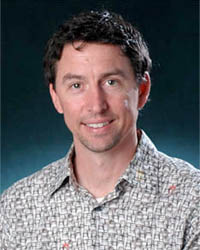 Max Boykoff has been selected as one of 20 Leopold Leadership Fellows for 2013. The Leopold Leadership Program, located at the Stanford Woods Institute for the Environment at Stanford University, was founded in 1998 to fill a critical gap in environmental decision-making: getting the best scientific knowledge into the hands of government, nonprofit and business leaders and the public to further the development of sustainable policies and practices.
Max Boykoff has been selected as one of 20 Leopold Leadership Fellows for 2013. The Leopold Leadership Program, located at the Stanford Woods Institute for the Environment at Stanford University, was founded in 1998 to fill a critical gap in environmental decision-making: getting the best scientific knowledge into the hands of government, nonprofit and business leaders and the public to further the development of sustainable policies and practices. 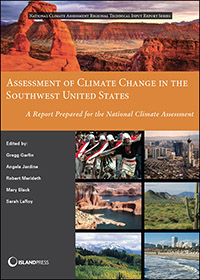
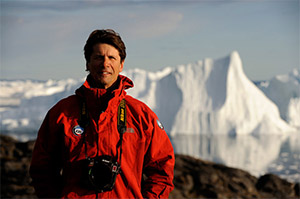 Filmmaker and adventurer James Balog shared his stirring and beautiful glacial photography revealing changes in climate on April 1 to a packed auditorium at the University of Colorado Boulder. The event, “A Conversation with James Balog on the Art of Chasing Ice,” was hosted by Earth Vision Trust and CU-Boulder’s Inside the Greenhouse, a multidimensional project that explores the nexus of environmental science and the arts and humanities. Beth Osnes, assistant professor of theatre and dance, leads Inside the Greenhouse in partnership with Max Boykoff, assistant professor in the Cooperative Institute for Research in Environmental Sciences (CIRES) and the Environmental Studies Program, and Rebecca Safran, assistant professor of ecology and evolutionary biology. All three professors work closely with Marda Kirn of EcoArts.
Filmmaker and adventurer James Balog shared his stirring and beautiful glacial photography revealing changes in climate on April 1 to a packed auditorium at the University of Colorado Boulder. The event, “A Conversation with James Balog on the Art of Chasing Ice,” was hosted by Earth Vision Trust and CU-Boulder’s Inside the Greenhouse, a multidimensional project that explores the nexus of environmental science and the arts and humanities. Beth Osnes, assistant professor of theatre and dance, leads Inside the Greenhouse in partnership with Max Boykoff, assistant professor in the Cooperative Institute for Research in Environmental Sciences (CIRES) and the Environmental Studies Program, and Rebecca Safran, assistant professor of ecology and evolutionary biology. All three professors work closely with Marda Kirn of EcoArts.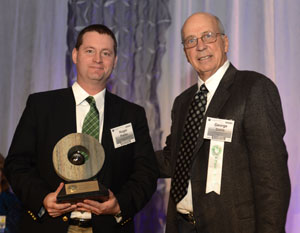 At the
At the 